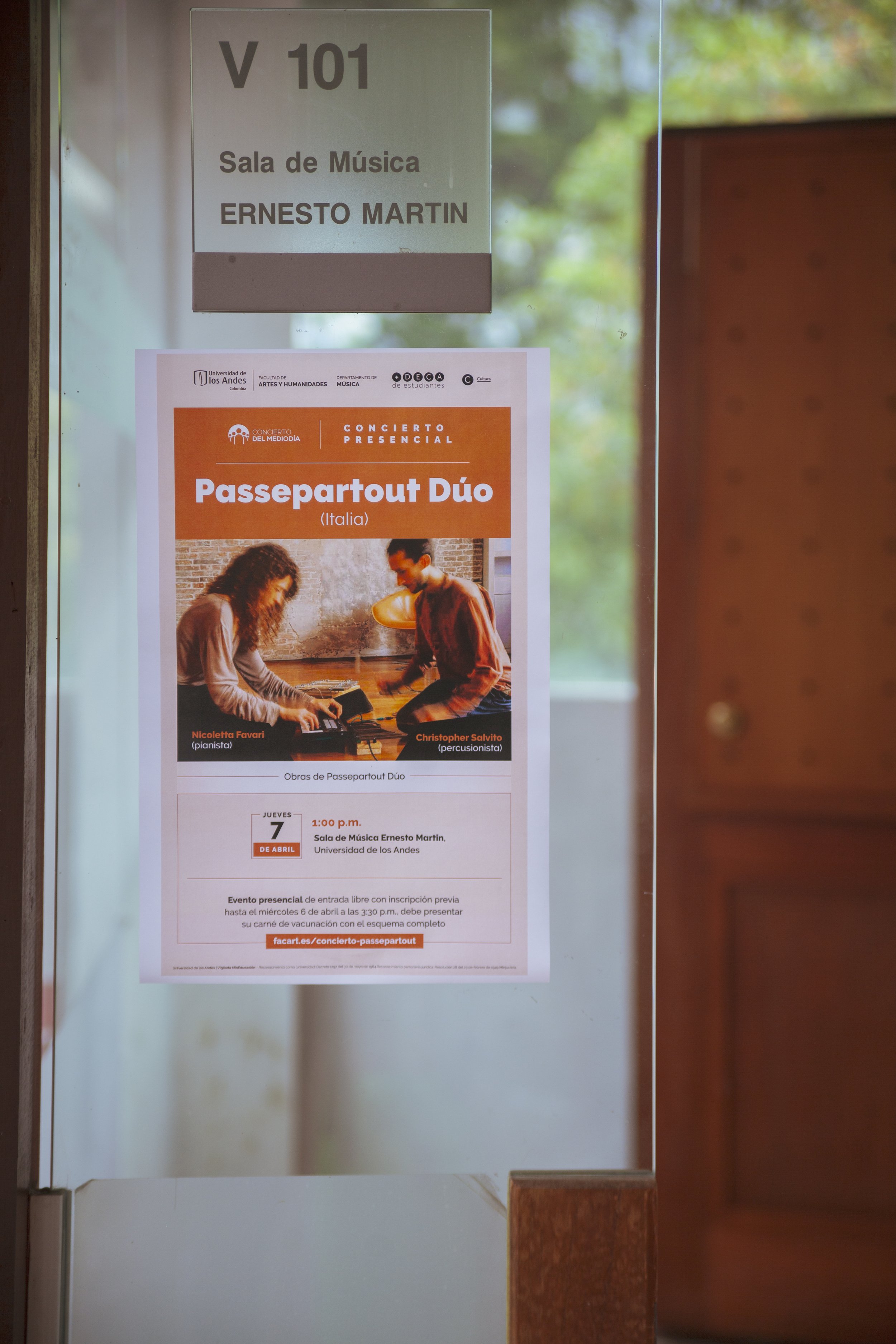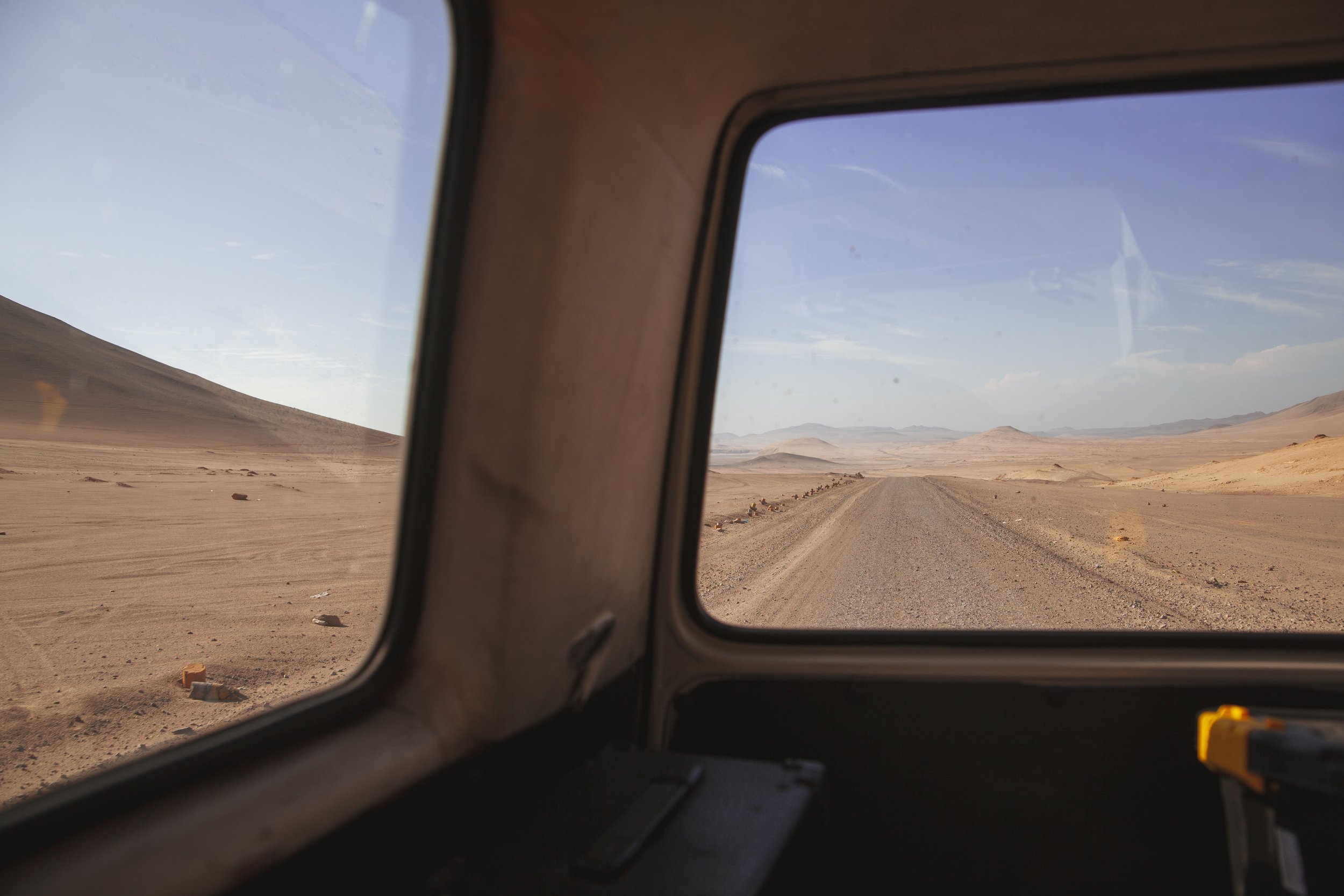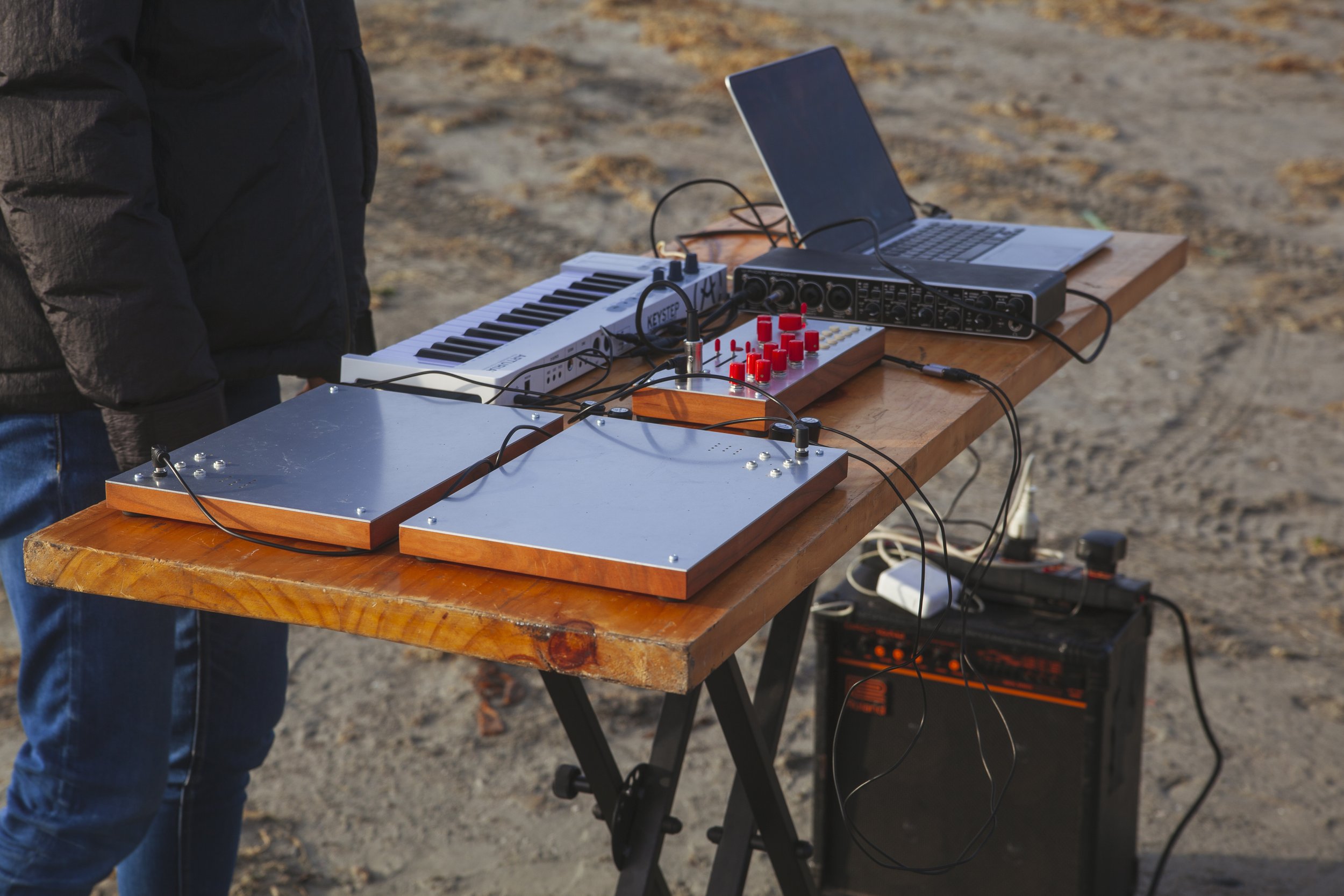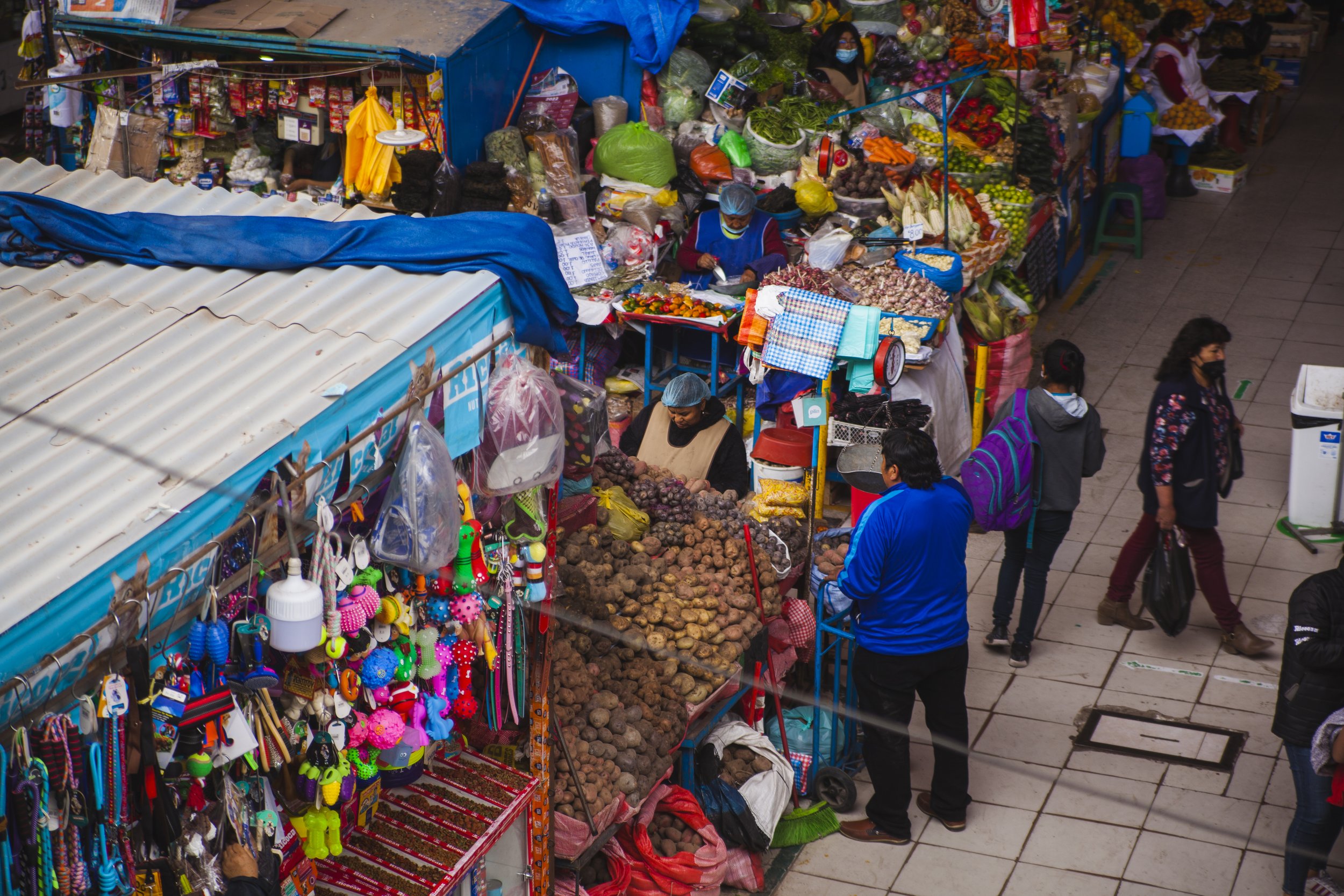The long drive through Paracas National Reserve
It wouldn’t be difficult to find many anecdotes on Google about armed assaults, scammer taxi drivers, pick pocketing, and bag snatching all across Latin America, and therefore it won’t come as a surprise that one of the main changes in mindset we encountered for our tour here related to safety. We like to see ourselves as fearless travelers with well-worn passports by now, but somehow this is the first trip of ours where locals warned us not to go out or at least not to go to certain parts of town. It has reminded us that traveling to almost all of the world is exceedingly safe, but not all of the world. In fact, we once asked a friend “So, where in Lima do you feel safe?” She responded with a laugh and said “In my own home…” For example, it is a normal practice to lock the door and roll up the window as soon as you get into a taxi, even more important than fastening your seatbelt (which usually wouldn’t exist anyway). If you forget to take this or any other of the other normal precautions, some locals will quickly remind you to do so. All that is to say that security colored our tour. Not so much because we felt truly “unsafe” at any particular moment, but instead because we had to give up some things we love, like taking photographs at every corner of a city, or walking for hours clear across entire urban areas. A remedy for at least one of these issues was a new addition to our camera collection: more or less valueless disposable film cameras which could fit in a pocket, and were a joy to use.
Chaotic barrios emerge from foliage laden hilltops
Despite this, our month through Colombia and Peru was a densely scheduled barrage of concerts hosted by some of the more proudly independent and underground venues of the two countries.
We flew from JFK to Medellín to start our tour at the beginning of April. It cannot be overstated the stark contrast between frigid Long Island, where our journey began, and temperate Medellín with its chaotic barrios emerging from foliage laden hilltops. What were previously pigeons became a bouquet of different tropical birds that constellated the vibrant vegetation of the city. Our first day in the city was a whirlwind of encounters and discoveries: on arrival, we were immediately taken to an exhibition opening at the Palacio de Bellas Artes, followed by a book presentation at the independent space of Platohedro. The language immersion was notable of course, but we somehow survived without any prior preparation.
The first official activity of the tour took place at the Exploratorio, where we set up for a morning of circuit soldering and synthesizer exploration. It was our first experience giving a workshop on electronics, and the six wonderful participants made it a great and memorable experience.
Our concert setup at La Pascasia
Our mountaintop Bandeja Paisa
A concert followed suit at La Pascasia, a bustling downtown venue with eclectic musical tastes, welcoming community, and adjacent bookshop. Most of our days were spent rehearsing with our three new collaborators (Julian, Julian, and Esteban) for our main performance at the Museum of Modern Art.
There are some notable things about everyday life that must be mentioned too: driving in a car in Medellín was probably the most extreme driving we’ve ever seen, and that considers exceedingly fast taxi rides clear across Uzbek deserts on unmaintained roads; the poverty in the city is real; Medellín has a great network of cable cars that finally connected the most unapproachable mountainside barrios to the city center, many of which were considered the most unsafe neighborhoods in the world back in the 90s.
Of course there’s also the food, which in Colombia is a national staple. You can find chicharron, fruit juices, arepas, and plantains for every occasion. But two experiences particularly stand out: Crêpes & Waffles is a chain that has surged to national pride since it was founded by some students in 1980, and that has apparently some remarkable CSR policies focused on women, which in South America is not something to take for granted! Also, our fantastic collaborators from ITM took us all the way to San Felix, a village in the mountains that has a fantastic view over the whole valley, where we enjoyed a remarkable Bandeja Paisa.
Leaving Medellín for Bogotá brought its own worries, as for weeks we had been reading about explosions and protests in the city related to the ongoing election campaign period and additional regulations imposed by the government on pillion riders in the city. But we did have one last fantastic meal at the airport, featuring the stars of soups, Mondongo and Ajiaco. The women at the adjacent table invited us to submerge the side plate of ingredients into the soup, even the fresh bananas, and well … it’s very delicious!
One of the few museums we visited in the country was also quite life-changing. The Gold Museum is really one-of-a-kind, and gave us a first insight into pre-colonial history. It sparked our interest into so many aspects of history and culture from this part of the world that we’ve spent our lives completely oblivious to.
A ‘clandestine’ jam session with Juanita Espinosa
We also had the chance to encounter the multidisciplinary artist Juanita Espinosa, with whom we had a little music session and a fantastic afternoon in the city center, including the Galeria Santa Fe. She also explained to us a peculiarity of the central park, where we could see an entire city of tents. Here is a very interesting article about the current situation.
Outside Universidad de Los Andes
We also gave two performances with our touring set: one as a lunchtime concert at the Universidad de los Andes, and one at the independent space of Matik Matik, which in its decades of operation has been wholly embraced by every underground scene of the city. We shared that concert with the local Ensemble CEG, so it was a treat to get to talk to local musicians too.
Peru
Inca Kola everywhere
Henri Quispe is the mind and the man behind El Paradero Cultural, the institution that invited us to create music for two weeks in Lima. His entrance to the scene was charismatic and unexpected: he showed up to the airport with his 1980 Volkswagen Vanagon, a kind of mascot for El Paradero which we didn’t yet know would become an important character of our story in Lima. Henri was particularly helpful for our Spanish immersion, confidently speaking to us and escorting us around the neighborhood of Lince and beyond.
tamales: pork, chicken, and cheese
The proposition behind our stay was to meet with a different musician everyday in preparation for a concert in the park two weeks after, a kind of ‘intercambio sonoro’ that would stretch genres, generations, and languages. The entire thing was a complete experiment, but we’re happy and grateful that we had the chance to meet so many artists working in the city.
Among the remarkable meals we had during our time in Lince we must mention the ceviche, the criollo, the chifa (a Cantonese-Peruvian hybrid reminiscent of US Chinese take-out with a sweet and sour sauce whose red hue looks a bit radioactive) and the tamales that we could get on our street corner for breakfast… sweet or savory, with pork, cheese or chicken!
During Holy week, we decided to have a stroll in the city center, where we could possibly catch a glimpse of some baroque absurd procession with dramatic statues, but unfortunately we only met a flood of religious people in pilgrimage from one church to the other, carrying laboriously woven palm leaves. To close the day, we decided to dive into a pollo a la brasa together with Henri, which turned out to be an incredible bargain and a huge feast.
The main character of our trip to Lima
Many generations of Fujifilm together for a reunion
Henri had a surprise in store for our weekend too: he developed this vision to drive South together in order to shoot a music video in some yet-to-be-known desert landscape. Our pseudo conversations in Spanish hardly helped us fully understand the scope of his ideas or intentions, but he really seemed to have a vision for this video, and so we got up on Friday morning at 4 am to load the van and leave the city. Another new friend, Ana, joined us to help out with the camera work. Henri is also particularly interested in photography, and there’s really nothing like traveling together with other camera-people, they’re always just as happy as us to stop and explore.
Wading through a meter of water
A very atmospheric fog accompanied our slow drive that saw Lima transform into a sprawling desert. To reach Paracas, our destination, it normally takes three hours, but it takes six hours for Henri’s special Volkswagen. The entire road trip was filled with scenes from an SUV commercial: barreling off road through the desert, wading through a flood, swerving around roads that wind up mountains; except instead of this shiny capable new vehicle, we were in a forty-year-old uninsured conversation piece. It was a great time, and the van even survived the entire trip without an issue.
Paracas’ Natural Reserve is a very touristic spot for the entire nation, although most people are just visiting for either the beaches or the sea lions; the main modes of transport were jeep, motorcycles, or dune buggies, and by the time we arrived at the entrance there was about a kilometer of cars lined up waiting to enter the park. Perhaps it was just out of respect for the Volkswagen, but no one seemed bothered when Henri drove off road cutting his way to the front of the line. After six hours on the road, it was nice to finally be greeted by the beaches, miradores, and endless desert. Most of our day in the park was spent stopping in every conceivable desert vista or ocean view eagerly waiting for Henri to find the “perfect spot” for our video.
Heading toward Restaurante “Hugo Blanco”
We were all extremely hungry by the mid afternoon. Having reached the very southern tip of the reserve, we approached a fishing village that seemed completely skipped by all other travelers, and for which we still haven’t found a name or any information about online. As we entered, locals were cleaning up nets from seaweed, and a group of friends congregated around a single shack. We were directed to the local “restaurant” where we had not much a choice but to eat a fantastic plate of fried fish. The village looms over a lagoon on the opposite side of which you could find a flock of flamingos, grazing in muddy waters that accumulated most of what the ocean fancies to carry: carcasses of various animals, shells, bottles - but the flamingos don’t mind much. The town is home to a characteristic church, nestled among all the sorts of ad-hoc shelters for fishing and daily life.
The campsite on a nearby beach
For fear of overstaying our welcome and with darkness approaching, we decided we would camp out on the nearby beach, where some other people had already set up tents in front of possibly one of the most scenic ocean views you can imagine. The sun set, and we set up to sleep inside the van, well protected from the mercilessly blowing wind that practically transformed our neighbors’ tents into kites.
And so early in the morning, a little sticky with salt from the air, we finally decided it was the time and place to make this music video happen, especially because the wind started to die down to a manageable level. The whole process didn’t take long as we scrambled to set up a table, our instruments, and the generator. In a single take it was all over: thirteen minutes of live music on this lost little beach in Peru.
The main square in Chincha
As we continued exploring the reserve, Henri came up with a new suggestion: we could go visit Chincha, another region where he had some connections. We were back on the road, looking for a social center where a special concert of Afro-Peruvian music could have taken place at 3pm, according to the poster.
Well, after a nice lunch, the friends of Henri never showed up, and the 3pm start of the concert became 10pm, so we resigned to return to Lima.
Cerro San Cristobál, near the Shipibo community
A relative moment of calm during our visit to the Shipibo community (photo by Henri)
The day after was Easter Sunday, and another suggestion came in from our boss: what about visiting the Shipibo community, to see if we could agree for a place and a time to give a little public concert during the week? To make a long story short, we ended up giving an extremely concise concert featuring our music for keyboard and drums, in the streets of this indigenous community for very very hyperactive kids, who were far more interested in playing our instruments than in listening to us play them. They swarmed around us as we clung to our sticks, drums, and keyboards which they were desperately trying to take away. It was tough, and in addition to that, the van finally broke down - so we had to find a different way back to El Paradero, both for us and the instruments. So yeah, a very stressful day for Henri especially, but at least we got to try a special dish at the Shipibo restaurant, featuring a strangely reddish lean meat that we later found out to be ‘cecina’, pork cured with bixa orellana, that would become a mainstay of our time in Chachapoyas.
Our setup at El Gato Tulipan
Our concerts finally kicked off in the capital: first at El Gato Tulipan we discovered some local artists and met a European living in South America for the first time during this tour, our sound technician Jorge.
And finally, in the Park of the Bomberos we participated in El Parardero’s Interacciones edition, an initiative that aims to bring music into public space, something that seems to be of particular relevance in the current cultural scene in Peru. Overall we had a great time, also performing the results of the collaboration with local musicians Isa, Claudia, and Karen, closing the night with a celebratory chilcano drink.
Yet again an early flight was waiting for us, this time for a northern city, Jaén. We landed in a different climate and atmosphere, the dry salty air of Lima replaced with a humid jungle, warm weather, and mountain landscape. You might be tricked into thinking Jaén is a regular regional airport touching down on the runway, but passengers filed onto buses that cut through the forests on roads in disrepair to a kind of single room bamboo structure with just one departure gate; at least the security is very relaxed!
A shuttle bus had already been reserved to take us all the way to our destination, a city a few hours away called Chachapoyas. We had been warned by the bus company that the drive will take longer than usual because of the disruption caused in the road by the (not-so-) recent earthquake and floods. We traveled through little towns and different landscapes, past bridges that had collapsed into the river and unpaved detours to finally reach Chachapoyas, at an altitude of 2,335 meters.
Our host Juan Carlos came to find us and took us around a bit, giving us some insights into the present and past of the city, which mostly thrives on its pseudo-colonial look and on being a gateway to the archeological ruins of Kuelap. With an economy completely propped up on recent tourism, the pandemic definitely left it hard hit.
Exploring Yalape
And so, the unstoppable organizer Juan Carlos decided that we should experience something cultural the morning after, and advised us to take a trip to Levanto. Levanto is an indigenous village that people can access mostly with a minibus that runs twice a day on very, very bumpy roads. And of course, choose two times a day for your minibus to run and one of them will surely be 4 in the morning. Squeezed among locals and vegetable deliveries, we arrived at 5am, where we were unloaded at the local bodega. The bodega was essentially closed, but the owner kindly prepared us breakfast by walking down the street to find bread and cheese which became a sandwich alongside some much needed instant coffee. We then basically sat for twenty minutes waiting for something to happen. And yes, a man on a motorbike passed by and invited us to follow him, as he was going to work to Yalepe, the nearby archaeological site that needed so desperately to be cleaned of weeds. The town was overall pretty quiet, and we were told that tourism had been hit not only from the pandemic, but also from the recent closure of the nearby site of Kuelap, where some walls had fallen for carelessness, and where tourists could no longer access.
Following our new guide, a machete affixed to his calf and a pickax resting on his shoulder, we got to walk among incredible (muddy) Amazonian nature for around half an hour, moving slower than the local men that ride around with horses, but deeply admiring the numerous hummingbirds and the incredible vegetation growing on top of other vegetation on top of other plants!
We got back to town very early, and we started looking around. What to do? We explored around and asked here and there, and we found out that the town also has an Association of Weavers, but that supposedly the club was closed for the day due to a funeral. A random meeting in the street brought us to visit one of the eight or so ladies that belong to the club. As soon as we climbed the stairs of an unadorned house we found her standing at the extreme of her violet warp on a backstrap loom. We couldn’t ask very intelligent questions in Spanish, but nonetheless it was fantastic just to silently observe her mastery and her hidden tricks, while weaving a poncho. She said the entire process would take just four days.
Back in the city, we gave a performance in the local square alongside some other local acts, and happily saw our instruments survive yet another public outdoor event.
Next up was the city of Cusco in the south, where a very unique hostel was waiting for us, a well-lived building run by a German host Ludwig, a friend of the organizer of our upcoming concert.
We met our new friends Marco and Milagros, aka Asimtria, to start preparations for the concert that was to take place at the Casa Pinguino, a new space hosting events downtown, with a spectacular view over the city. We shared the concert with a multitude of local acts, as the sun was setting.
Our concert at University of San Pablo
Once again, it was time to fly south. In Arequipa, we were welcomed by Thais who organized two days of food budget, a hotel stay downtown, and a nice concert at the Centro de las Artes of the University of San Pablo. The city lays beautifully in front of a giant volcano, el Misti, that could apparently erupt at any moment, but nobody seems bothered. After all, it is from the volcano that they quarried all the stone to build the impressive architecture, a backbone of the history of the city. The stone doesn’t particularly seem apt for detailed carving, but you will find plenty of decorations on pillars and churches, often in a mix of elements of Spanish Catholicism and Incan beliefs.
The bus station in Arequipa
Misti on the road
Our last destination in Peru was Tacna, seven hours of bus away, driving through the dusty start of the Atacama. Our plan was to cross the border to Chile on May 1st, the exact day that the crossing of Chacalluta would reopen after two years of pandemic. We knew it wasn’t going to be easy, but we were well prepared with a giant stack of printed papers, the tried and true kryptonite of every mediocre bureaucrat. We jumped on the first bus of the day, our passports seized by a women who handled all of the border crossing logistics with ease and hopeful eyes on behalf of a group of 27 passengers. It was a mix of families, young Peruvians excited to surf Chilean waves, as well as a mix of travelers from Ecuador and Colombia. It was about one and a half hours through three different officials: between missing vaccine certificates, miscommunications, and overall border toughness only 11 of us passed the border. We also found out that the Peruvian President was supposedly traveling from Lima to be present at the border and to celebrate its reopening. It really seemed like everybody from the President to the taxi drivers didn’t really believe the Chileans would actually reopen this border until it finally happened! It was a relief to finally cross and know that the rest of our South American adventures would be possible.




























































































